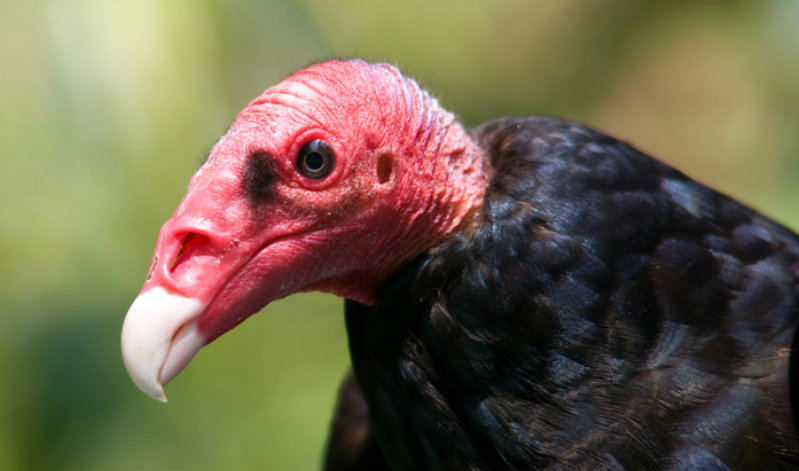Can vultures help us avoid food poisoning?
https://www.mdlinx.com/internal-medicine/article/2888
Bald is beautiful? What's in a vulture's digestive system that enables it to eat dead meat without getting sick?
Abstract: A Systematic Review of Carrion Eaters' Adaptations to Avoid Sickness
http://www.bioone.org/doi/10.7589/2016-07-162Paper: The microbiome of New World vultures
https://www.nature.com/articles/ncomms6498
(a) Microbial clustering on the basis of Bray?Curtis dissimilarity matrix (visualized by principal coordinate analysis). Facial skin and hindgut communities exhibited minor overlap (ANOSIM; R=0.744, P=0.001). Hindgut (ANOSIM, R=0.333, P=0.001) and skin (ANOSIM, R=0.321, P=0.001) communities showed minor clustering within vulture species. (b) Variation in diversity (Shannon index) in facial skin and hindgut. The hindgut community was significantly less diverse than the facial community (Wilcoxon Rank-Sum test, P≪0.001). The facial communities of the black vulture were more diverse than those of the turkey vulture whereas the hindgut samples displayed the opposite pattern (Wilcoxon Rank-Sum test, P≪0.01). There were no differences between male and female vultures in the clustering (not shown) of hindgut (ANOSIM, R=0.063, P>0.05) or facial (ANOSIM, R=0.025, P>0.05) communities.

 Author
Topic: New developments in the field of science (Read 754738 times)
Author
Topic: New developments in the field of science (Read 754738 times)
